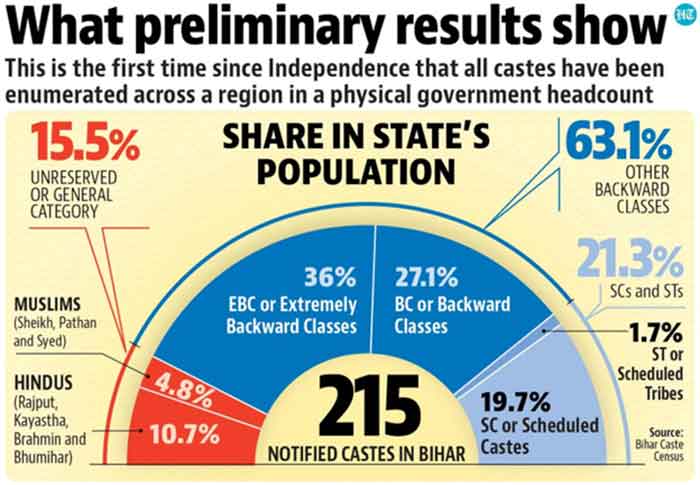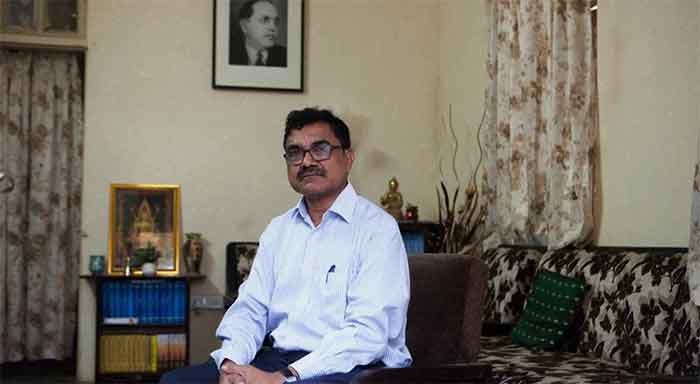
The census of India has a long history dating back over 130 years. The British administration conducted the first census in 1853 in the North Western Provinces (encompassing present-day Uttar Pradesh) to obtain data on the population and classify it under different categories. Caste-based enumeration emerged a few years later as a challenge for the British administrators, as they encountered discrepancies between the societal hierarchies described in ancient texts and the divisions they observed in reality.
The British enumerators had the responsibility of developing classificatory principles that enabled them to record entities as distinct figures, ensuring no overlapping boundaries. Colonial census administrator, H.H. Risley, played a significant role in defining caste for such classification. He sought to order castes within the existing Varna system described in the Vedic texts. The Varna system divided society into four categories: Brahmins, Kshatriyas, Vaishyas, and Shudras. However, Indian society in reality followed the Jati system rather than the Varna system, at that point in time. Jati, which emerged during the Mauryan period, was more rigid and emphasized labour specialization. During the census, Jati’s were observed as social groups based on factors such as profession, region, language, religion, and gender.
The British enumerators aimed for uniformity in the criteria of identification and classification throughout the census process. The enumerators created caste groups into which different Jati’s were classified and then placed these groups within the hierarchy based on the Varna system, primarily based on occupation. This rigid classification by the British hindered the fluidity of the Jati system in Indian society.
The British found several benefits in creating such a rigid system of division in their colony. After the 1857 revolt, they sought to prevent coalitions that could pose a threat to their rule. The caste-based enumeration helped them divide the Indian community, recruit soldiers from loyal and non-threatening social groups, and incite animosity among different regiments. The enumeration processes also allowed them to label certain nomadic or tribal groups as criminals, enabling control over remote areas. This imposition of rigid hierarchies and divisions created a sense of othering and objectification among the Indian population.
The last caste-based census in colonial India was conducted in 1931. Soon after, India gained independence, and efforts were made to dismantle the caste system. The Constitution protected Scheduled Castes (Dalits) and Scheduled Tribes (Adivasis), and reservations were implemented to uplift these marginalized communities. However, challenges and discrimination based on caste still persist in present-day India.
A pivotal moment in Indian history concerning caste enumeration and reservation was marked by the formation of the Mandal Commission. In 1979, under the leadership of Prime Minister Morarji Desai, the Indian government established the Commission to identify Other Backward Classes (OBCs). The Commission was headed by Bindheshwari Prasad Mandal, a member of the Indian parliament. Its primary focus was to investigate the issue of seat reservations and quotas to address caste-based discrimination.
To determine “backwardness”, the Commission utilized eleven different indicators related to public, financial, and educational factors. The report drew upon data from the 1931 census, which was the last caste-based census conducted in India at that time. In 1980, the Mandal Commission released its report, which recognized 3,428 communities as OBCs, constituting 54.4% of India’s population. The Commission recommended the implementation of employment quotas for OBCs in the public sector, including nationalized banks and private organizations receiving government financial aid. It also proposed reserving 27% of seats in higher education institutions for OBCs, in addition to the existing 22.5% quotas for Scheduled Castes (SCs) and Scheduled Tribes (STs).
The report triggered widespread protests, particularly from students belonging to higher castes. Ultimately, the report was shelved, and the significant recommendations it made were not implemented in Indian society. One of the significant criticisms against the report was the definition of “backward class” employed by the Commission and whether the groups included in this category truly warranted the extent of support proposed for them. Caste identity emerged as a point of conflict in the enumeration process, reflecting the historical backdrop of extensive caste oppression during colonial India
Despite the growing public outcry and calls for justice, the prospects for improved caste policies in India appear uncertain. The current political regime emphasizes identity, particularly Hindu and Hindutva ideologies. In an effort to strengthen their political dominance, they have extended promises of empowerment and a better future to the OBC community, even though their actions and ideologies have historically favoured upper castes.
The ability to shape politics and the lives of India’s vast population lies in the power of knowledge creation, particularly in relation to caste identities. However, this critical power has often encountered obstacles and has been prone to misuse. The path to upliftment for a substantial proportion of India’s population still relies on the very tool that was historically used to oppress them.
Neha Tuheen is an undergraduate student of International Studies at FLAME University, Pune.
Email: nehatuheen@ gmail.com













































